#Hamline University
Text


Hamline Hockey
#Hamline University#Hamline Pipers#hockey girls#college hockey#women’s hockey#athlete#female athletes#college athlete#college girl#athletes in bikinis#bikini
72 notes
·
View notes
Link
In both cases, ignorant Westerners who should be supporting freedom and equality are in the forefront of quashing that exact freedom in order to avoid hurting the feelings of irrational, potentially violent Muslims:
- State Department spokesman Ned Price repeatedly said in response to Ben-Gvir's visit that the US supports the "status quo," implying that the visit violated it and was "provocative:" "We oppose any unilateral actions that undercut the historic status quo. They are unacceptable.... it’s absolutely critical that all sides exercise restraint, refrain from provocative actions and rhetoric, and preserve that historic status quo at Haram al-Sharif/Temple Mount, both in word and in practice....We’re deeply concerned by any unilateral actions because – precisely because they have the potential to exacerbate tensions, or worse. "
- Hamline University issued a statement claiming, falsely, that what the instructor did violated Islamic law: "Students do not relinquish their faith in the classroom. To look upon an image of the prophet Muhammad, for many Muslims, is against their faith." But it is not at all clear that Islamic law addresses viewing such depictions, only creating them. And as mentioned, the Muslim students could have chosen not to view them.
These are perfect examples of "proleptic dhimmitude," where Westerners act (often beyond what Muslims demand) in fear of anticipated Islamic responses that had not even occurred.
This illustrates the real unwritten law that has increasingly dominated the West: "Don't piss off the Muslims." All of the moral posturing about "tolerance" and "status quo" are fig leaves to obscure the fact that Westerners live in fear of Islamic terror, and are willing and even anxious to give up on our own freedoms to pander to the most extreme Muslim positions, human rights be damned.
By using the yardstick of banning anything that is "provocative," the West is allowing the most intolerant and violent Muslims to dictate Western behavior in all aspects of life. Because anything and everything can provoke Islamists.
Because in both cases the dhimmified Westerners are giving a green light for extremist, potentially violent Muslims to expand their demands ad infinitum:
46 notes
·
View notes
Text


The “Islamophobic incident” catalyzed plenty of administrative commentary and media coverage at the university. Among others, it formed the subject of a second Oracle article, which noted that a faculty member had included in their global survey of art history a session on Islamic art, which offered an optional visual analysis and discussion of a famous medieval Islamic painting of the Prophet Muhammad. A student complained about the image’s inclusion in the course and led efforts to press administrators for a response. After that, the university’s associate vice president of inclusive excellence (AVPIE) declared the classroom exercise “undeniably inconsiderate, disrespectful and Islamophobic.”
Neither before nor after these declarations was the faculty member given a public platform or forum to explain the classroom lecture and activity. To fill in the gap, on Dec. 6, an essay written by a Hamline professor of religion who teaches Islam explaining the incident along with the historical context and aesthetic value of Islamic images of Muhammad was published on The Oracle’s website. The essay was taken down two days later. One day after that, Hamline’s president and AVPIE sent a message to all employees stating that “respect for the observant Muslim students in that classroom should have superseded academic freedom.” The essay’s censorship and the subsequent email by two top university administrators raise serious concerns about freedom of speech and academic freedom at the university.
The instructor was released from their spring term teaching at Hamline, and its AVPIE went on the record as stating: “It was decided it was best that this faculty member was no longer part of the Hamline community.” In other words, an instructor who showed an Islamic painting during a visual analysis — a basic exercise for art history training — was publicly impugned for hate speech and dismissed thereafter, without access to due process.

#Yasmine Mohammed#islam#muhammad#prophet muhammad#cancel culture#pictures of muhammad#islamophobia#academic freedom#corruption of education#religion#Hamline University#islamophilia#religion is a mental illness
36 notes
·
View notes
Photo

Was the die was cast with the foundation of the fields of sociology, psychology, and anthropology, impositions on the human infinitude ten trillion times more grotesquely oppressive than any religion ever devised? Please note that the warrant for the persecution of this adjunct professor is all socio-psycho-babble and no theology. Anyway, there is a world elsewhere—and yet, google the adjunct-victim and you get nothing other than stories about this. No platform, no website, no podcast, no portfolio, no blog, no archive, nothing to fall back on. No books to buy, nowhere to send money! Don’t let this dereliction happen to you. I’m not sure I’d send her money cold, but if she had a book to buy, I’d buy it, even if only to put in a Little Free Library, just as a token of support. I did find her dissertation in art history, and gave the pdf a skim out of curiosity. The immolation of “degenerate art” arises as topos; the penultimate figure is a photo of the Bamiyan Buddhas. It is almost immobilizing the way we become what we behold.
3 notes
·
View notes
Text
“Universities should defend all students’ right to practise their faith. They should not allow that faith to dictate the curriculum. That is to introduce blasphemy taboos into the classroom.
Hamline has effectively declared whole areas of Islamic history beyond scholarly purview because they may cause offence. And not just Islamic history. As Audrey Truschke, associate professor of South Asian history at Rutgers University, observed, Hamline’s action “endangers… professors who show things in class, from premodern Islamic art to Hindu images with swastikas to Piss Christ”.
(…)
The actions of Hamline University are a threat not just to academic freedom but to religious freedom, too. They implicitly disavow the variety of traditions that constitute Islam and condemn those traditions as in some sense so bigoted that they cannot be shown in a class on Islamic art history. University bureaucrats are, as non-Muslims, taking part in a theological debate within Islam and siding with the extremists.
That is why, the historian Amna Khalid observes, it is as a Muslim she is most offended by Hamline’s actions that have “flattened the rich history and diversity of Islamic thought” and “privileged a most extreme and conservative Muslim point of view”. In an age in which there are demands for the syllabus to be “decolonised”, she adds, “Hamline’s position is a kind of arch-imperialism, reinforcing a monolithic image of Muslims propounded by the cult of authentic Islam”.
Perhaps the most damaging aspect of Hamline’s action is the use of the language of diversity to eviscerate the very meaning of diversity. This is an issue not confined to Hamline. Too many people today demand that we respect the diversity of society, but fail to see the diversity of minority communities in those societies. As a result, progressive voices often get dismissed as not being authentic, while the most conservative figures become celebrated as the true embodiment of their communities.
Here, liberal “anti-racism” meets rightwing anti-Muslim bigotry. For bigots, all Muslims are reactionary and their values incompatible with those of liberal societies. For too many liberals, opposing bigotry means accepting reactionary ideas as authentically Muslim; that to be Muslim is to find the Danish cartoons offensive and the depiction of Muhammed “harmful”. Both bigots and liberals erase the richness and variety of Muslim communities.
The Hamline controversy shows how the concepts of diversity and tolerance have become turned on their head. Diversity used to mean the creation of a space for dissent and disagreement and tolerance the willingness to live with things that one might find offensive or distasteful. Now, diversity too often describes a space in which dissent and disagreement have to be expunged in the name of “respect” and tolerance requires one to refrain from saying or doing things that might be deemed offensive. It is time we re-grasped both diversity and tolerance in their original sense.”
“Islam, my beloved faith, is under attack in America. But the threat does not derive from so-called Islamophobes or right-wing extremists.
No, the danger to Islam is much more insidious, because it comes from those who proclaim to be our allies, the woke left.
(…)
Unfortunately, in America today, Islamists have found sanctuary in a progressivist culture that values identity over reason, meritocracy, history, and truth. Fundamentalists and the woke are kindred spirits, united by a hatred of Western values.
Under wokism, identity defines its adherents. If you are a victim, then you are in the favored caste. And in this victim-hierarchy, Islam towers over all other religions.
In the streets of Iran, Iraq, Syria, Afghanistan, and Saudi Arabia, dissenters are silenced by the gun or club. But in America that dirty work is done with a word.
When you hear, Islamophobia, beware. The word is invoked as a weapon to silence.
What the Islamists at CAIR understand and the campus activists and oppressive progressive left may not fully realize is that they are working on behalf of the powerful, not the weak, when they silence free thought.
(…)
Of course, no one is denying that bigotry against Muslims exists, but free thought is not bigotry. If there is rampant anti-Muslim bigotry, it's the left's 'bigotry of low expectations'.
(…)
The very essence of America, debate, critical thinking, and learning is under threat. And American Muslims suffer from this beside their countrymen.
America was once a laboratory of reform for Muslims, it has instead become a place where our own universities cut us off at the knees. Our academics side with the fundamentalists, who hate America and everything it stands for.
The Islamist-woke alliance spells doom for Islam and the American way of life.”
#hamline#hamline university#islam#free speech#censorship#muslims#diversity#tolerance#progressivism#left#liberal#art#jasser#zuhdi jasser
4 notes
·
View notes
Text
NOBODY IS GOING TO MATCH MY FREAK (none of the people from my college liked my bug identification instagram story)
#hamline university#Hamline#pipers#bugs#it was a hoverfly btw. if u even care#ppl were worried it was gonna sting me 💀💀💀
0 notes
Text
This happened a while ago at Hamline University in my metro area. This art history professor did nothing wrong, in fact she had a very carefully and well-thought out plan for teaching about this sensitive topic, showing images of paintings of the prophet Mohammed. In the history of Christianity, there have been groups of Christians that strongly opposed any images of God or Jesus (the iconoclasts) what if they had become the dominant faction in Europe? Or if the Ottoman Empire or the Moors had taken over Europe, and Christians were in the minority, & "woke" Muslims were worried about offended Christians by depicting those blasphemous images made by Michelangelo? Or Khalil Hebdo was bombed for making carciatures of Jesus?
#twin cities#hamline university#islam#civil liberties#censorship#hypocrisy#double standards#art history#mngael post
0 notes
Text
'It is not our intent to place blame; rather, it is our intent to note that in the classroom incident—where an image forbidden for Muslims to look upon was projected on a screen and left for many minutes—respect for the observant Muslim students in that classroom should have superseded academic freedom,' Miller said.
I feel like I’m losing my mind reading this article, nothing makes sense in what happened..what is going on in US universities?
#hamline university#Erika López#academic freedom#Islam#identitarianism#individualism#réflexion personnelle
0 notes
Text
Wow. If you care about universities remaining secular spaces of academic freedom & rigor,
Please Read This
0 notes
Text
0 notes
Text
Secular institutions are not obligated to enforce religious rules.
#Islam#art history#muhammad#Art#hamline university#Professor#Medieval art#Koran#Secularism#prophet muhammad#News#Link#University#College
1 note
·
View note
Text
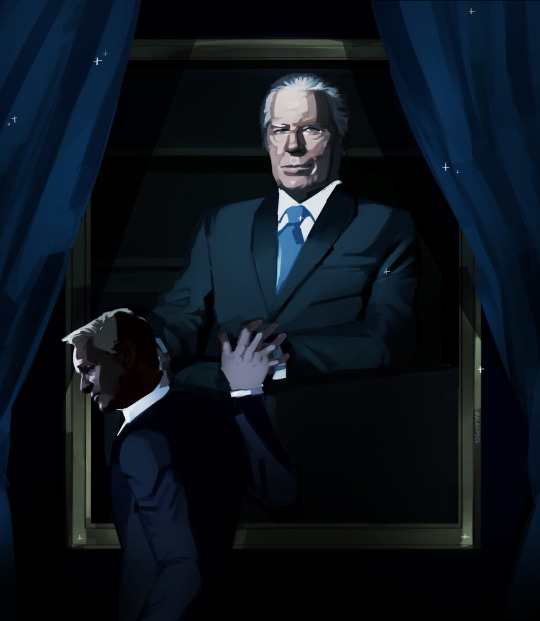
h, h, m but there's only one h left .
#better call saul#brbabcs#howard hamlin#chuck mcgill#is this choward ? up to your interpretation idk#breaking bad universe#this sat in the wips for almost 2 months i had to get it done#so hey bcs followers this one's for u
373 notes
·
View notes
Text
Howard Hamlin: illusion of burning sins
Inspired by Better Call Saul S04E01 - Smoke:
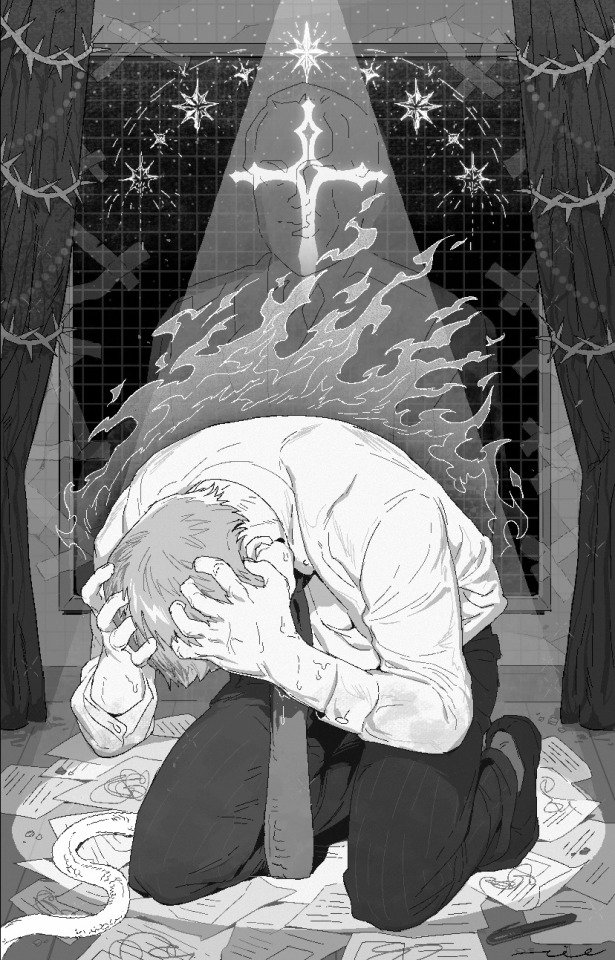
“There’s something else that’s still burning after the fire that took Chuck’s life.”
I originally drew this piece at the start of the year, but recently I got back to it and decided to add some spice. Despite some small errors, I like how it looks now. Yum!
My creative process & thoughts for this piece:
It’s originally a self-projective piece partially about my mental struggles, but I won’t be talking about myself here.
Let’s focus on Howard Hamlin in this episode, right after Chuck’s death - Unforgivable as Howard Hamlin thought he was, he was partially a scapegoat for Jimmy McGill’s deeds. I’m putting Howard in the frame, but it is reflecting an aftermath of Jimmy’s self-denial and psychological manipulation driven by his own insecurities. Jimmy told Howard “that’s your cross to bear” while the sentence also serves as a suggestion to the audience that Howard is indeed a sacrifice to Jimmy’s self-loathing and avoidance. Jimmy McGill would be the illusionist who casted this whole “illusion of sins” upon Howard Hamlin’s already conflicted mind. Would you feel pity for this guy? Vince legit made him cry for your pity.
Everything is still about Jimmy McGill, our cunning, venomous perpetrator. Self-loathing and antisocial tendencies are a part of his true nature. Did he see Howard’s distress? Did he see Howard Hamlin’s suffering? He did. But this man closed his heart to them, just like the way he run away from himself. Jimmy McGill’s lack of sympathy is one of the very things that brought Howard into his grave. Just how pathetic Howard is? Grieving for his misplaced error in the dark, this man is oblivious to the fact that he was already entwined by the serpent: a cold blooded creature who would never change its nature - the snake here serves as a symbol of Jimmy McGill’s inherent antisocial tendencies. Howard could never foresee the future of this serpent sinking its teeth into him and pump out its deadly poison, which will finally give him the kiss of death. Even the stars that will guide him on his path cannot save him from this misery. Personally, 401 feels like the beginning of the downfall of Howard Hamlin, and the rise of Saul Goodman.
If we think about the causes of Chuck’s death, it’s not hard for anyone to see that Howard Hamlin, this poor man is overshouldering someone else’s sin - someone who’s unable to face the responsibilities to their own actions, someone who’s in constant denial, someone who’s too much hatred in their heart. (Naw Howard is legit Jesus here💀) it’s why I chose to cover Chuck’s face with the cross too, for how Jimmy mislead Howard into believing that Chuck’s death was all his fault, when Jimmy himself was the main perpetrator.
Anyway, in later seasons of the show, we can notice that Howard was crumpled up and put into somewhere he didn’t belong, he’s forced to face this superficial alienation - his marriage was falling apart too. With this vulnerability, Vince showed that this lead lawyer of HHM was stuck, he was conflicted, his glory was wearing off, he was struggling like every normal person would. He was burning not only because he’s trapped by guilt and sin, but also for the reason that he has the vitality to “burn” and release energy: He is resilient. He has the life inside of him to be burnt.
Compassion creates a sense of closure between characters and audiences. The entire tight spot in Howards life conveyed by Vince makes audiences empathize with him easily - honestly I never felt a thing for Howard Hamlin’s boring ass because I was busy siding with Jimmy McGill in my mind in the first few seasons. What’s interesting about Brba/Bcs is that Vince put us in front of a quandary: who would you side with in a fucked up world with fucked up people? When watching the first few seasons of BCS I put my empathy in Jimmy McGill, but then my empathy slowly detached from him as the show progressed.
As for Howard, I just pity this man as an audience after witnessing his fall presented by Vince in the later seasons: what Howard deserved was anything but a nameless grave with his murderer, a defamation, and a twisted, made-up story stated by his perpetrators on his funeral. Vince made it obvious to the audience. Yes. Let’s make this glorious man suffer. Let him be guilt tripped. Let his life fall apart like a roller coaster so you’ll lay your compassion and love onto him - Howard Hamlin lost everything, he didn’t even have a death with dignity thanks to the people operating the fucked up bullshit in the dark - It’s interesting to notice my “love” for this character is originally out of compassion.
Despite Howard, there are lots of characters who deserve audience’s love. There are Nacho, Mike, Gus, their motives are even noble if you try to look at it from a humane perspective, but anyhow they’re all part of this gut-wrenching predatory game - it’s basically how everything is so complicated in a world depicted in Better Call Saul and Breaking Bad, they create intricate conflicts. I do love how fictions like BrBa and BCS allow us to explore the complexity of humanity in a safe distance.
As Howard Hamlin was buried, Saul Goodman buried Jimmy McGill alongside with him too. And then there’s Lalo Salamanca lying beside Howard Hamlin like they’re doing pillow talk - they are both powerful beings taking high positions in the BCS food chain. As they disappeared, the path for Saul Goodman’s career to ascend is broad and clear. A cucaracha rising to the top, and this time he’s fully embracing the darkness.
In conclusion: Great make-believe, Vince!
#0liviart#better call saul#bcs fanart#bcs#Howard Hamlin#chuck mcgill#brbabcs#artists on tumblr#digital art#procreate#Jimmy McGill#breaking bad universe
226 notes
·
View notes
Text
By: Amna Khalid and Jeffrey Aaron Snyder
Published: Feb 6, 2023
"We affirm both academic freedom and our responsibility to foster an inclusive learning community. Importantly, these values neither contradict nor supersede each other.”So declared a Hamline University faculty resolution asking President Fayneese S. Miller to resign given her handling of a now-infamous controversy over the display of the Prophet Muhammad in an art-history class. While we applaud the faculty for taking a stand against administrative overreach, we think its position on the relationship between academic freedom and inclusion is mistaken. In our viewthere will inevitably be tensions between these two values. And when those tensions arise, academic freedom must prevail — at least, if we want to ensure a college education worthy of its name.
The assertion that inclusion and academic freedom are not in tension is an article of faith for many of those dedicated to promoting campus inclusion. In 2018, the Harvard University Task Force on Inclusion and Belonging released an 82-page report stating that the “values of academic freedom and inclusion and belonging provide each other with synergistic and mutual reinforcement.” According to this report, the two should not be conceived of as “distinct values that must be accommodated to each other” or, worse still, as “antagonistic goals.” This view is central to the frameworks advanced in books such as Ulrich Baer’s What Snowflakes Get Right: Free Speech, Truth, and Equality on Campus, John Palfrey’s Safe Spaces, Brave Spaces: Diversity and Free Expression in Education andSigal Ben-Porath’s Cancel Wars: How Universities Can Foster Free Speech, Promote Inclusion, and Renew Democracy.
When campuses are facing a controversy like Hamline’s, it’s important to recognize that students, faculty, and administrators don’t have the time for careful, philosophical deliberations about the meaning and value of inclusion. Rather, they find themselves in the grip of a system we call DEI Inc.
DEI Inc. is a logic, a lingo, and a set of administrative policies and practices. The logic is as follows: Education is a product, students are consumers, and campus diversity is a customer-service issue that needs to be administered from the top down. (“Chief diversity officers,” according to an article in Diversity Officer Magazine,“are best defined as ‘change-management specialists.’”) DEI Inc. purveys a safety-and-security model of learning that is highly attuned to harm and that conflates respect for minority students with unwavering affirmation and validation.
Lived experience, the intent-impact gap, microaggressions, trigger warnings, inclusive excellence. You know the language of DEI Inc. when you hear it. It’s a combination of management-consultant buzzwords, social justice slogans, and “therapy speak.” The standard package of DEI Inc. administrative “initiatives” should be familiar too, from antiracism trainings to bias-response teamsand mandatory diversity statements for hiring and promotion.
In many ways the Hamline debacle is the ideal case study for laying bare the unavoidable tensions between academic freedom and the DEI Inc. approach to inclusion. The incident has received considerable attention, but allow us to rehearse some of the key events and the language used by the various people involved.
This past fall semester, the syllabus for Erika López Prater’s global-art-history online course contained an advisory alerting students that the class would feature depictions of holy figures, including the Prophet Muhammad; if students had any concerns about the visual content they were invited to contact her. During the class session on Islamic art, Prater offered students an optional exercise: Analyze a 14th-century Islamic painting of Muhammad receiving his first Quranic revelation. Before presenting the painting, she reiterated the content warning and asked students who would prefer not to see the image to turn off their screens.
Despite Prater’s precautions, a Muslim student complained that pictorial depictions of the prophet offended her Muslim sensibilities: “As a Muslim, and a Black person, I don’t feel like I belong, and I don’t think I’ll ever belong in a community where they don’t value me as a member, and they don’t show the same respect that I show them.”
The student complaint set the campus DEI bureaucracy into motion. David Everett, associate vice president for inclusive excellence, made a public statement calling the classroom exercise “undeniably inconsiderate, disrespectful, and Islamophobic.” Because of the incident, Everett said, “it was decided it was best that this faculty member was no longer part of the Hamline community.” Prater was not given any opportunity to explain the rationale behind the class exercise.
In December, President Miller and David Everett sent an open letter to the campus asserting that “appreciation of religious and other differences should supersede when we know that what we teach will cause harm,”and in particular “respect for the observant Muslim students in that classroom should have superseded academic freedom.” After the news made national and international headlines, Miller doubled down, explaining that her decisions were guided by “prioritizing the well-being of our students,” especially by“minimizing harm.”
Miller’s comments at least had the virtue of offering an honest diagnosis of the tension between academic freedom and inclusion. This tension has only ratcheted up in recent years, as colleges make grand promises to create “environments in which any individual or group feels welcomed, respected, supported, and valued.” With institutions promoting such an expansive definition of “inclusion,” we shouldn’t be surprised when they become ensnared in their own rhetoric and policies. How will DEI administrators respond when a Chinese national complains that a political-science discussion about the persecution of Uyghurs is “harmful anti-Chinese propaganda”?Or when a Christian evangelical says her faith was insulted in a contemporary art class after seeing a Robert Mapplethorpe photograph of two men kissing? The permutations are endless and, for professors who teach sensitive or controversial material, alarming.
The American Association of University Professors clearly states that students do not have the right to shield even their “most cherished beliefs” from challenge or scrutiny:
Ideas that are germane to a subject under discussion in a classroom cannot be censored because a student with particular religious or political beliefs might be offended. Instruction cannot proceed in the atmosphere of fear that would be produced were a teacher to become subject to administrative sanction based upon the idiosyncratic reaction of one or more students. This would create a classroom environment inimical to the free and vigorous exchange of ideas necessary for teaching and learning in higher education.
The censorship of ideas because students with particular political beliefs might take offense is precisely what’s happening across the country with anti-critical-race-theory legislation.The notion of harm is central to these “divisive concepts” laws, which have used Trump’s now-revoked 2020 Executive Order 13950 as a template.Among the things prohibited in this EO was that “any individual should feel discomfort, guilt, anguish, or any other form of psychological distress on account of his or her race or sex.”That white students could shut down discussions of “white privilege” and “structural inequality” because they make them uncomfortable is a most egregious affront to academic freedom. Laws like Florida’s “Stop WOKE Act” underscore that policies oriented around harm-avoidance in the classroom are educational dead ends.
To safeguard high-quality teaching that powerfully and accurately communicates our disciplines and fields, academic freedom must be vigorously defended. Students, DEI administrators and other campus stakeholders should understand that professorshave the right to decide what and howto teach based on their academic expertise and their pedagogical goals. They should also know that there is no academic freedom without academic responsibility. Academic freedom is not a license to mouth off or teachwhatever material suits our fancy. Moreover, when thorny issues arise pertaining to classroom instruction, we have a responsibility to listen to students’ concerns and take them seriously. This does not mean, however, that students should be able to dictate the curriculum.
The Hamline case should serve as a wake-up call for anyone who cares about classroom teaching, critical thinking, and the future of higher education. Some may see this controversy as an exception or an outlier. It’s not. It’s a bellwether of how DEI Inc. is eroding academic freedom. Let’s not forget it took an outpouring of sustained, high-publicity resistance, not to mention a lawsuit, for Hamline to soften its charge of “Islamophobia” against Prater and affirm its commitment to academic freedom.
When institutions proclaim that academic freedom and inclusion coexist in a kind of synergistic harmony, they are trafficking in PR-driven wishful thinking. In the hardest cases, there is no way of upholding an “all are welcome here” brand of inclusion while simultaneously defending academic freedom. Instead, we should turn to the wise words of Hanna Holborn Gray, former president of the University of Chicago: “Education should not be intended to make people comfortable, it is meant to make them think.”
[ Via: https://archive.is/xBXiq ]
#Hamline University#diversity equity and inclusion#diversity#equity#inclusion#islamophobia#academic freedom#academic integrity#corruption of education#higher education#DEI Inc.#DEI industry#religion is a mental illness
6 notes
·
View notes
Photo
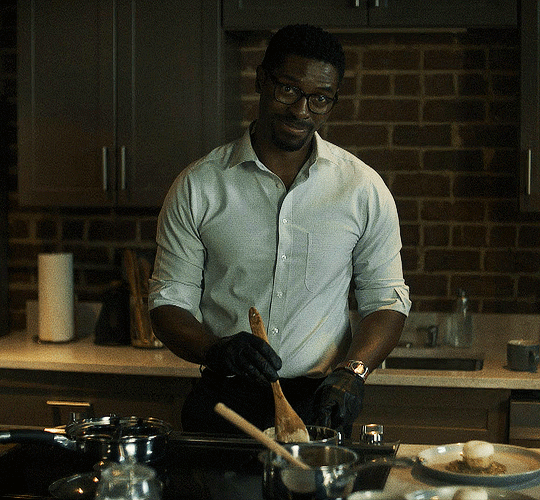

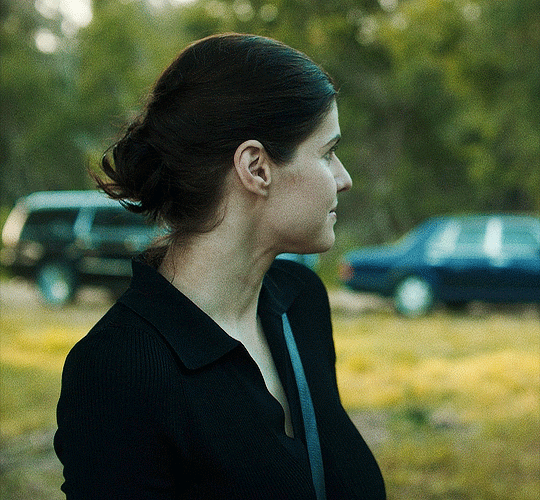
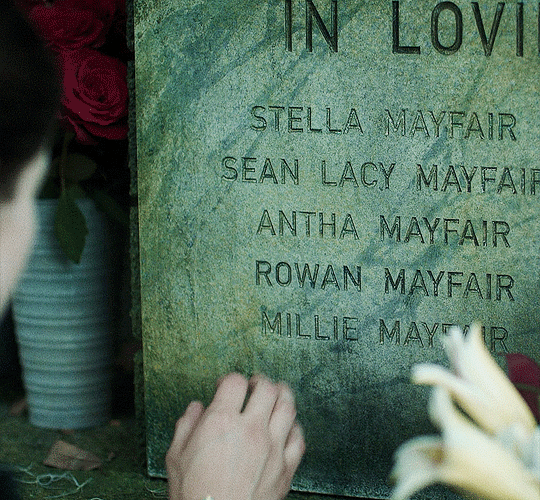
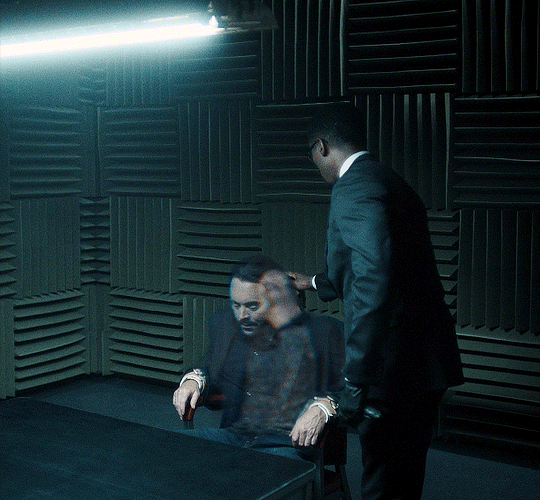
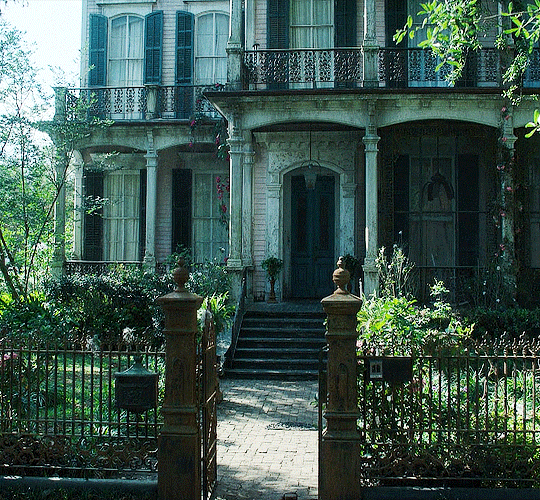

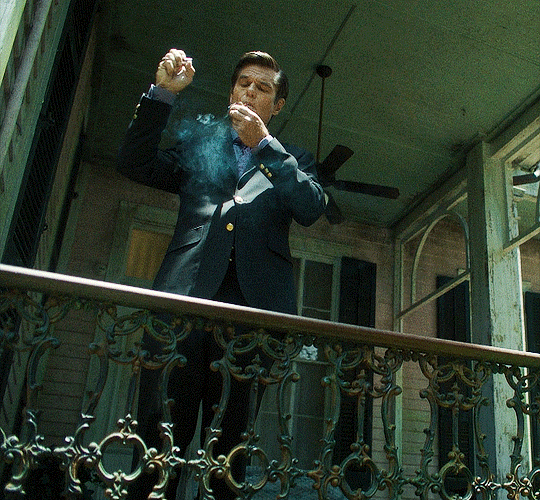


MAYFAIR WITCHES 1x04 "Curiouser and Curiouser"
#mayfair witches#cinematv#tvedit#ciprien grieve#rowan fielding#lasher#tongayi chirisa#alexandra daddario#jack huston#cortland mayfair#harry hamlin#mayfairwitchesedit#anne rice's mayfair witches#immortal universe#mayfair witches 1x04#1x04#gifs
274 notes
·
View notes
Note
OH OH OH DUDE FIRST KISS WITH HOWARD AND HES SHOCKED WEVE NEVER BEEN KISSED BEFORE BUT LIKE IN A SWEET WAY AND GETS REALLY NERVOUS ABOUT WHETHER HIS WAS GOOD



•As soon as your lips had parted from each other, a tirade of words had come flooding from Howard
•He was stuttering and rushing his words so much you only just caught the tail end of a few things
•"You're okay? That wasn't non consensual? You can tell me if so."
•"I'm sorry that was a rush of the moment thing. I-I don't know what came over me."
•"That was amazing. But I should have asked first and I'm terribly sorry—"
•All it took to calm his mind was a smile and soft touch to his arm, reassuring him that yes, it was indeed okay of him to do that. In fact, you had been waiting for him to kiss you for some time now
•That brought a steady smile to Howard's face. He just laughed that breathy laugh of his before reaching out as if to cup your jawline, pausing halfway
•"Can I— Can I kiss you again?"
•"Yes Howard. You can."
•And who was he to deny you your wishes?

#howard hamlin x reader#howard x reader#howard#howard hamlin#breaking bad#breaking bad universe x reader#bcs#bcs x reader#better call saul#better call saul x reader#fluff#headcanons#request#x reader
71 notes
·
View notes